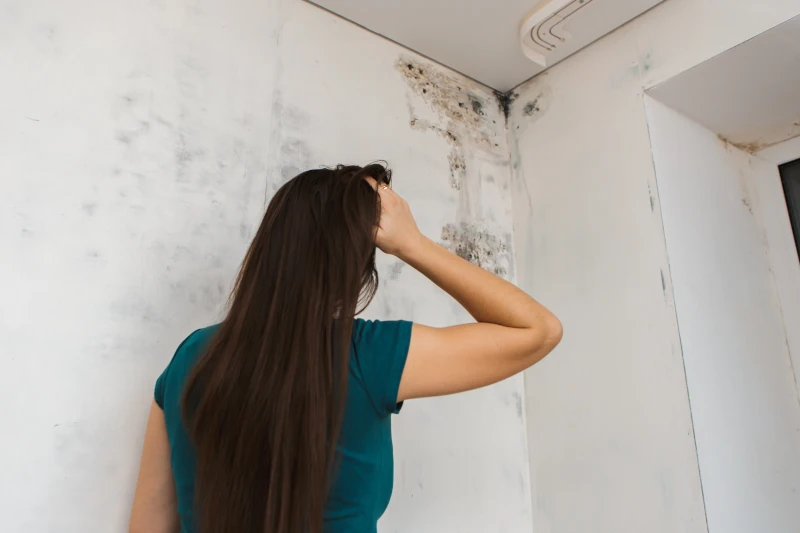March 19th, 2024
Mold is a common household problem that can have serious consequences for both health and property. From triggering allergies to causing structural damage, mold requires prompt and effective remediation to prevent further harm. In this comprehensive guide, we'll explore the ins and outs of mold remediation, providing valuable insights into safe and effective practices. Whether you're dealing with a small mold issue or a larger infestation, understanding the remediation process is crucial for protecting your home and your family's health.
Understanding Mold:
Mold is a type of fungus that thrives in damp, humid environments. It can grow on virtually any surface, including walls, ceilings, floors, and even furniture. Mold reproduces by releasing spores into the air, which can then settle on surfaces and begin to grow under the right conditions. Common types of mold include:
- Stachybotrys (Black Mold): Black mold is perhaps the most infamous type of mold due to its dark color and association with health problems. While not all black molds are toxic, they should be treated with caution and addressed promptly.
- Aspergillus: Aspergillus is a common indoor mold that can cause respiratory issues and allergies, particularly in individuals with weakened immune systems.
- Penicillium: Penicillium molds are often found in water-damaged buildings and can cause respiratory issues and skin irritation.
- Alternaria: Alternaria molds are commonly found in damp areas such as bathrooms and basements. Exposure to Alternaria can trigger allergies and asthma symptoms.
The Mold Remediation Process:
Effective mold remediation involves a systematic approach to identify, remove, and prevent the growth of mold. Here's a step-by-step guide to safe and effective mold remediation practices:
- Inspection and Assessment: The first step in mold remediation is to conduct a thorough inspection of the affected area. Trained professionals identify the extent of the mold problem, assess the underlying cause of moisture, and develop a remediation plan.
- Containment: To prevent the spread of mold spores to unaffected areas, containment measures are implemented. This may involve sealing off the contaminated area with plastic sheeting and using negative air pressure machines to create a controlled environment.
- Removal of Contaminated Materials: Mold-infested materials such as drywall, carpeting, and insulation may need to be removed and properly disposed of. Care must be taken to minimize disturbance and prevent the release of mold spores into the air.
- Cleaning and Disinfection: Surfaces that are not removed but are contaminated with mold must be thoroughly cleaned and disinfected. Specialized cleaning solutions and techniques are used to effectively remove mold spores and prevent regrowth.
- Drying and Dehumidification: Addressing the underlying moisture problem is essential for preventing mold recurrence. Proper drying and dehumidification techniques are employed to remove excess moisture from the air and surfaces.
- Post-Remediation Verification: Once remediation is complete, a final inspection is conducted to ensure that the mold problem has been effectively addressed. Air quality testing may also be performed to verify that mold levels have returned to normal.
Safety Precautions:
Mold remediation can expose individuals to harmful mold spores and contaminants, so it's essential to take proper safety precautions:
- Personal Protective Equipment (PPE): Mold remediation workers should wear appropriate PPE, including gloves, respirators, and protective clothing, to prevent exposure to mold spores and toxins.
- Ventilation: Adequate ventilation is crucial during mold remediation to minimize exposure to airborne mold spores. Fans, air scrubbers, and exhaust systems may be used to improve air circulation and remove contaminants from the air.
- Proper Disposal: Contaminated materials should be properly bagged and disposed of according to local regulations. This prevents the spread of mold spores to other areas and reduces the risk of recontamination.
- Professional Assistance: While minor mold problems can often be addressed by homeowners, larger infestations or mold growth in difficult-to-reach areas may require professional assistance. Experienced mold remediation professionals have the knowledge, equipment, and expertise to safely and effectively remediate mold problems.
Mold remediation is a complex process that requires careful planning, thorough execution, and strict adherence to safety protocols. By understanding the fundamentals of mold remediation and following safe practices, homeowners can effectively combat mold and protect their health and property. Whether you're dealing with a small mold issue or a larger infestation, addressing mold promptly and effectively is essential for maintaining a healthy indoor environment. With the right approach, you can conquer mold and enjoy a clean, mold-free home for years to come.
